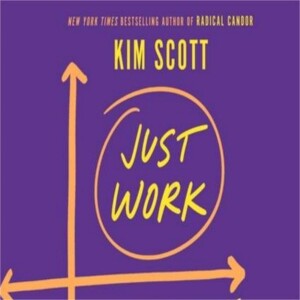Episodes

Friday Jul 26, 2024
Friday Jul 26, 2024
Chapter 1 Introduction and Background of The Comfort Book
"The Comfort Book" was written by Matt Haig, a British author well-known for his contributions to both fiction and non-fiction. Born on July 3, 1975, Haig has written highly acclaimed novels such as "The Humans" and "How to Stop Time," as well as the memoir "Reasons to Stay Alive," which discusses his struggles with depression and anxiety. His works often delve into themes of mental health, hope, and recovery, drawing on his personal experiences to resonate with and uplift his readers.
"The Comfort Book" itself is a collection of notes, lists, and stories compiled by Haig meant to offer solace and consolation to those facing tough times. There isn't a linear narrative or structured progression as it is intended to be more of a patchwork of comforting thoughts that can be picked up as needed. The book reflects Haig's own philosophies on dealing with grief, setbacks, and the general stresses of life. It can be seen as a continuation of his work in "Reasons to Stay Alive" but branches out to offer broader, universally comforting messages.
The context within which "The Comfort Book" was written included Haig's ongoing public discourse about mental health, his active social media presence where he frequently shares thoughts on anxiety, depression, and wellness, and the global context of increased anxiety and stress due to factors such as the COVID-19 pandemic. This mixture of personal history and contemporary issues makes "The Comfort Book" a relevant work aimed at providing readers with a sense of warmth and understanding during difficult times.
Chapter 2 Analysis of Main Characters and Plot
It is a collection of personal anecdotes, reflections, and meditations intended to offer solace and comfort to its readers. The book is structured as a series of notes, lists, and stories pulled from a variety of inspirations, including philosophy, art, and the author’s own experiences with depression and anxiety.
Key themes in the book focus on self-compassion, resilience, and the importance of hope. Haig shares insights and affirmations that aim to provide support and encouragement to individuals going through difficult times. There’s no traditional development of plot or characters; rather, the development occurs within the readers themselves as they reflect on Haig’s words and find personal meaning and solace in them.
In summary, The Comfort Book is more of a companion or a guide, which readers can turn to for comfort and reassurance whenever they need it, rather than a story-driven book.
Chapter 3 Theme Exploration and Analysis
"The Comfort Book" by Matt Haig is a collection of notes, lists, and stories assembled by the author aimed at offering solace and hope as he reflects on the themes of comfort, motivation, anxiety, and resilience. While it's not a narrative-driven book, it curates a plethora of insights drawn both from Haigh's personal experiences and various philosophical, spiritual, and historical sources. Here’s a closer look at some specific themes explored within the book:
Mental Health and Depression:
- Haig openly discusses his struggles with depression and anxiety, providing a very personal touch to his musings on how to find comfort. He shares snippets of what has helped him through his darkest moments, offering these personal anecdotes as a form of universal solace and connection.
Hope and Resilience:
- A central theme is the cultivation of hope and resilience. Haig encourages the reader to hold onto hope, even when the world seems bleak. This includes embracing imperfection and the unpredictability of life, while highlighting the strength found in recovery and the importance of continuing to move forward.
Philosophy and Wisdom from History:
- Haig peppers the book with references to philosophers such as Marcus Aurelius and Nietzsche, as well as various Eastern philosophies and spiritual insights. He draws particularly on Stoicism, discussing its approach to facing adversity and the ways in which ancient wisdom can be relevant today.
The Importance of Self-Compassion and Kindness:
- There's a significant emphasis on treating oneself with kindness. Haig speaks about self-accept
Book https://www.bookey.app/book/the-comfort-book
Author https://www.bookey.app/quote-author/matt-haig
Quotes https://www.bookey.app/quote-book/the-comfort-book
YouTube https://www.youtube.com/watch?v=nkji9b1pOG0
Amazom https://www.amazon.com/Comfort-Book-Matt-Haig/dp/0143136666
Goodreads https://www.goodreads.com/book/show/55825273-the-comfort-book

Friday Jul 26, 2024
Friday Jul 26, 2024
Chapter 1 Introduction and Background of Laundry Love
"Laundry Love: Finding Joy in a Common Chore" is a book co-authored by Patric Richardson and Karin B. Miller. Patric Richardson is popularly known as "The Laundry Guy" and is noted for his deep knowledge of and passion for laundry. His enthusiasm for this everyday task transforms it from a mundane chore to an enjoyable experience. Richardson hails from Kentucky, where he grew up learning the different facets of doing laundry. His expertise not only covers the practical aspects of managing laundry but also stretches into understanding fabric care and best practices for maintaining clothes.
Richardlives in St. Paul, Minnesota, where he runs a store named Mona Williams. He also conducts laundry camps that are very popular and often sold out. These camps are aimed at teaching participants various laundry techniques ranging from removing stains to maintaining the quality of different fabrics.
"Laundry Love" exemplifies his philosophy that caring for clothes is a way to care for people. The book aims to change the reader’s perspective on laundry, viewing it not just as a task but as an art form that prolongs the life of clothing and celebrates memories associated with them. It conveys a blend of practical advice, personal anecdotes, and a deep love for doing laundry, making it resonate with those seeking a deeper connection with their everyday tasks.
The context of the book seeks to engage a wide audience, encouraging readers to rethink their approach to laundry. By integrating elements of environmental consciousness—such as recommending more natural cleaning products—and cost-effective strategies, Richardson reshapes the narrative around laundry from an energy-draining chore to an engaging, environmentally friendly, and joyful activity. The book also stands out for its emphasis on inclusivity and accessibility in garment care, promoting techniques that are feasible for people at different economic levels and living situations.
Richardson's approach mirrors broader contemporary movements that look to find mindfulness and satisfaction in household tasks, positioning "Laundry Love" as a pivotal guide for transforming routine duties into pleasurable, fulfilling activities.
Chapter 2 Analysis of Main Characters and Plot
It's a practical guide centered on laundry and fabric care. The book provides insights into the techniques and philosophy of laundering, emphasizing its therapeutic and joyful aspects.
The "character" is Patric Richardson himself, also known as "the Laundry Evangelist." Through the book, Richardson shares his extensive knowledge and passion for laundry, aiming to transform the often-monotonous chore into a pleasant experience. He covers different methods to care for various fabrics, tips on stain removal, and recommendations for maintaining the longevity and quality of clothing.
Readers will understand the importance of proper laundry care techniques and learn how to implement these practices in their daily lives. Richardson's enthusiasm for the subject may inspire readers to view laundry differently, potentially making it a more enjoyable part of their routines.
Chapter 3 Theme Exploration and Analysis
"Laundry Love: Finding Joy in a Common Chore" by Patric Richardson, with Karin B. Miller, transforms the mundane task of doing laundry into an enjoyable and thoughtful experience. Published in 2021, the book delves not just into practical advice on how to manage laundry effectively but also explores deeper themes that relate to our everyday lives. Here's a closer look at some of the key themes in the book:
Mindfulness and Presence:
Richardson emphasizes the meditative and therapeutic aspects of doing laundry. He invites readers to be present in the moment while engaging in laundry tasks, finding a rhythm and peace in the process that many might consider monotonous. This approach encourages an appreciation for the small, often overlooked moments of daily routines.
Sustainability and Environmental Consciousness:
Throughout "Laundry Love," there is a strong emphasis on environmentally friendly practices. Richardson advocates for using less detergent, skipping fabric softeners, and opting for more natural cleaning agents like vinegar and baking soda. He also discusses the benefits of line drying clothes and choosing energy-efficient appliances, aligning everyday chores with a more sustainable lifestyle.
Cultural Appreciation and Historical Perspective:
Richardson infuses his book with stories that connect laundry traditions from different cultures and historical contexts, showing how these practices have evolved over time. This not only enriches the reader’s understanding of how deeply intertwined laundry is with culture and history but also respects and celebrates diverse approaches to this universal chore.
Empowerment through Knowledge:
At its heart, "Laundry Love" is a guide to becoming more competent in taking care of one's belongings. Richardson provides detailed advice on how to treat different fabrics, remove various stains, and preserve the life of garments. This theme of empowerment is pivotal, as knowledge about doing laundry effectively can lead to greater confidence and self-reliance in everyday life.
Community and Connection:
Richardson shares stories and insights that highlight how laundry can be a connector between people, whether through shared laundry facilities or the communal aspects of washing clothes in different societies. He corroborated the idea that such shared experiences around laundry can foster community and deepen connections among individuals.
Respect for Belongings and Consumer Responsibility:
A significant theme in the book is the call to respect and care for what we own, which in turn challenges the throwaway culture prevalent in modern consumerism. By teaching readers how to care for their clothes properly, Richardson promotes a more ethical consumption pattern where quality is valued over quantity and longevity of items is a key focus.
Joy and Love:
Perhaps the most prominent and appealing theme of the book is finding joy in the ordinary. Richardson advocates transforming laundry from a chore into a labor of love, encouraging readers to take pride in this routine activity and to find happiness in ensuring the cleanliness and longevity of their and their lovedffects.
---
The themes in "Laundry Love" extend beyond tips for washing clothes, touching on mindfulness, sustainability, cultural respect, empowerment, community, consumer responsibility, and joy. These deeper insights encourage readers to rethink their approach not only to laundry but also to other everyday tasks, finding fulfillment and meaning in unexpected places.
Book https://www.bookey.app/book/laundry-love
Quotes https://www.bookey.app/quote-book/laundry-love
YouTube https://www.youtube.com/watch?v=LDUZZJVgAHU
Amazom https://www.amazon.com/Laundry-Love-Finding-Common-Chore/dp/1250235197
Goodreads https://www.goodreads.com/book/show/49247159-laundry-love

Thursday Jul 25, 2024
Thursday Jul 25, 2024
Chapter 1 Analysis of Main Characters and Plot
Character: Kerr discusses the importance of building character, emphasizing that strong values and a clear sense of identity are essential for success both on and off the field.
Adaptability: The book highlights the All Blacks' ability to adapt to changing circumstances and opponents. Adaptability is portrayed as a critical skill for any leader or team seeking to maintain a competitive edge.
Team Culture: "Legacy" goes in-depth into the culture of self-discipline, humility, and mutual respect cultivated by the All Blacks. This culture is foundational to their sustained success.
Leadership: A significant theme in the book is the unique leadership style of the All Blacks, which involves distributed leadership where every team member is encouraged to take responsibility and lead by example.
Learning: Continuous improvement and lifelong learning are also important themes. The All Blacks' ethos of always striving to get better, learning from mistakes, and seeking feedback is portrayed as crucial for personal and professional development.
Legacy: Finally, the underlying theme throughout the book is the concept of legacy. Kerr explores how members of the All Blacks team are motivated by a desire not only to succeed in the present but to leave a lasting legacy for future generations.
In essence, "Legacy" provides insights into the principles and practices that drive one of the most successful sports teams in the world, making it applicable not only in sports but in various leadership and team situations in any field.
Chapter 2 Theme Exploration and Analysis
"Legacy" by James Kerr is a book that takes an in-depth look at the successful culture and leadership principles of the New Zealand national rugby team, the All Blacks. The team is renowned for its historic winning record and Kerr explores what makes them so successful and how those strategies can be applied in various fields beyond sports. Here are some of the central themes and topics explored within the book:
Leadership and Character: Kerr emphasizes the importance of strong leadership in building a successful team. The All Blacks' leadership philosophy is centered around character, integrity, and collective responsibility. The idea is that 'Better People Make Better All Blacks', stressing personal development as much as physical skill.
Team Culture and Values: The All Blacks' culture is based on a set of core values, which include discipline, humility, and respect. Kerr discusses how these values create a positive, supportive, and driven team environment. A notable tradition is "sweeping the sheds" — senior players clean up the locker room as a humility act, emphasizing that no individual is bigger than the team.
Continuous Improvement (Whakapapa): Kerr addresses the theme of legacy and continuous improvement through the Maori concept of whakapapa, which stresses the importance of understanding where one comes from and enhancing that legacy for future generations. This is reflected in the All Blacks' motto, "Leave the jersey in a better place," which is about building on the legacy left by previous players.
Adaptability and Decision Making: The ability to adapt to changing circumstances and make crucial decisions under pressure is a key focus. Kerr highlights the All Blacks' practice scenarios that mimic game pressure and uncertainty to prepare players for real matches. This adaptive mindset is linked to the concept of "going for the gap," a philosophy of seeking and exploiting opportunities.
Accountability and Ownership: Encouraging player-led leadership and accountability is another theme in the book. The All Blacks empower players to take ownership of their roles and the team process, including giving players the responsibility to set their training regimes and review their performances.
Mental Toughness and Focus: Kerr explores the psychological aspects of rugby and how mental toughness contributes to the All Blacks' success. Techniques such as visualization, mindfulness, and maintaining focus under extreme pressure are discussed to illustrate how the All Blacks prepare not just physically, but mentally.
Humility in Success: Despite their success, the All Blacks maintain a culture of humility. Kerr illustrates how this humility does not denote weakness but rather a focus on constant improvement and respecting all opponents.
Legacy: Finally, the concept of legacy permeates the entire book. This goes beyond merely sustaining success; it’s about creating something that stands the test of time and inspires all those connected to it to strive for excellence.
Kerr concludes that the principles underlying the All Blacks' success are applicable beyond rugby, offering insights for leadership and effective team building in any organizational context. "Legacy" provides a thorough exploration of these principles, making it a widely recommended read for those interested in leadership and organizational culture.
Book https://www.bookey.app/book/legacy-by-james-kerr
Quotes https://www.bookey.app/quote-book/legacy-by-james-kerr
YouTube https://www.youtube.com/watch?v=6CTK__8scY8
Amazom https://www.amazon.com/Legacy-James-Kerr/dp/147210353X
Goodreads https://www.goodreads.com/book/show/18890191-legacy

Thursday Jul 25, 2024
Thursday Jul 25, 2024
Chapter 1 Introduction and Background of Eight Dates
"Eight Dates: Essential Conversations for a Lifetime of Love" is a book written by John Gottman, Julie Schwartz Gottman, Doug Abrams, and Rachel Carlton Abrams. This book, published in 2019, focuses on guiding couples through eight conversation-based dates, each centered on a fundamental topic crucial for a flourishing relationship. The guided dates include discussions about conflict, sex, money, family, and more, designed to foster intimacy and lasting connection.
The authors bring distinct but complementary expertise to the book:
John Gottman is a prominent psychologist who has conducted extensive research on marriage and couple relationships. He is well-known for his work on marital stability and divorce prediction, involving the observation and analysis of couple interactions. Gottman's research has led to the development of methods and tools to improve relationships, making him a highly respected figure in the field of relationship psychology.
Julie Schwartz Gottman is also a clinical psychologist and co-founder of the Gottman Institute with John Gottman. She has co-authored several books with him and is recognized for her work in couple’s therapy, focusing on marriage, sexual issues, and the clinical training of professionals.
Doug Abrams and Rachel Carlton Abrams bring their insights as authors who have written about love, health, and personal well-being. Doug Abrams has been involved in literature that bridges science, spirituality, and practical advice, while Rachel Carlton Abrams specializes in integrative medicine, particularly focusing on the health and wellness aspects of daily living, including sexual wellness.
Context of the book:
The book is grounded in empirical research conducted by the Gottman Institute, which emphasizes the importance of communication in relationships. Each of the eight dates is aimed at tackling a major area of relationship life that often leads to conflicts or disconnection. The dates are structured to foster mutual understanding, respect, and empathy, enabling couples to address and navigate the complexities of their relationships effectively.
The context of "Eight Dates" is in the broader tradition of relationship self-help literature but is particularly distinguished by the empirical rigor of the Gottmans' methodology. It is addressed not only to couples facing problems but also to those who are just starting out or looking to deepen their bonds. The practical exercises and guided conversations are designed to be accessible, making it easy for partners to engage in meaningful dialogue and build a stronger foundation together.
Overall, "Eight Dates" serves as both a preventive measure against potential relational issues and a therapeutic tool to enhance intimacy and understanding among couples.
Chapter 2 Analysis of Main Characters and Plot
Here’s a breakdown of the key "characters" and main themes for each date:
Trust and Commitment - Partners discuss what these elements mean to them and how they impact their relationship, establishing a foundation of loyalty and faithfulness.
Addressing Conflict - This focuses on how couples handle disagreements, understanding each other's approaches to conflict, and developing strategies for managing disputes constructively.
Sex and Intimacy - Couples explore their desires and needs in terms of physical and emotional intimacy, discussing how to enhance their sexual relationship.
Work and Money - This date involves conversations about career aspirations, money management, and aligning financial goals, which are crucial for planning a future together.
Family - Here, the dialogue centers around family backgrounds, influences, and expectations about roles and parenting (if applicable), aiming to build understanding and appreciation for each other's family dynamics.
Fun and Adventure - Couples discuss what brings joy and excitement to their relationship, exploring shared interests and planning for leisure and adventure that foster a deeper connection.
Growth and Spirituality - This theme allows individuals to talk about their personal and spiritual growth, values, and what gives their life meaning, seeing how these influence the relationship.
Dreams - The final date focuses on sharing individual dreams and supporting each other’s aspirations, reinforcing the partnership as a supportive space for personal development.
Though not a conventional story with a plot, "Eight Dates" provides a structured pathway for couples to deepen their understanding of each other and strengthen their relationship through guided, intentional conversations.
Chapter 3 Theme Exploration and Analysis
"Eight Dates: Essential Conversations for a Lifetime of Love" by John Gottman and Julie Schwartz Gottman is a relationship advice book that is based on years of research by the Gottman Institute. The book offers a structured guide for couples to explore and improve their relationship through a series of eight specific dates, each focused on a critical aspect of a healthy, long-standing relationship. The core idea is to provide a framework for conversations that can help partners to better understand each willing to engage in deep, meaningful interactions.
Here are the specific themes or topics each of the eight dates in the book addresses:
Trust and Commitment:
Trust and commitment are foundational to any romantic relationship. In this date, couples discuss their views on these concepts, what each term means to them, and how they can strengthen these elements within their relationship.
Conflict:
This date encourages partners to discuss how they handle disagreements. It’s centered around understanding each other's methods of dealing with conflict, recognizing ongoing issues, and discussing strategies for managing disputes constructively.
Sex and Intimacy:
This conversation aims at fostering intimacy by openly discussing preferences, desires, and needs regarding physical and emotional intimacy. It's about creating an atmosphere where both partners feel safe to express their sexual desires and boundaries.
Work and Money:
Financial issues can be a significant source of stress in relationships. This date focuses on financial planning, spending habits, and career aspirations, aiming to align expectations and plans surrounding money and professional life.
Family:
Here, the discussion revolves around the role of family in each partner’s life, expectations about the involvement with extended family, and thoughts on parenting for couples who plan or already have children. It helps clarify each partner's beliefs and expectations about family dynamics.
Fun and Adventure:
Maintaining an element of fun and adventure can be crucial for sustaining a vibrant relationship. This date encourages discussions about what each partner considers fun and adventurous, how they currently make time for enjoyment, and how they can incorporate more fun into their lives together.
Growth and Spirituality:
This theme explores the personal and spiritual growth of each partner. The conversation may include topics like personal values, religious beliefs, and what each individual needs to feel fulfilled and grow within the context of their relationship.
Dreams:
Understanding and supporting each other’s dreams and aspirations is vital for a nurturing relationship. This date prompts partners to share their own dreams and explore how they can support each other in achieving personal goals.
Each of these dates is designed to enhance communication, deepen understanding, and foster emotional intimacy by tackling conversations that might not arise naturally in day-to-day interactions. By carefully planning these dates and preparing for the conversations, couples can strengthen various dimensions of their relationship, ranging from daily logistics and conflict resolution to deeper values and aspirations.
Book https://www.bookey.app/book/eight-dates
Author https://www.bookey.app/quote-author/john-m.-gottman
Quotes https://www.bookey.app/quote-book/eight-dates
YouTube https://www.youtube.com/watch?v=V8XlHGHP98I
Amazom https://www.amazon.com/Eight-Dates-Essential-Conversations-Lifetime/dp/1523504463
Goodreads https://www.goodreads.com/book/show/37588679-eight-dates

Wednesday Jul 24, 2024
Wednesday Jul 24, 2024
Chapter 1 Introduction and Background of Just Work
"Just Work: How to Root Out Bias, Prejudice, and Bullying to Build a Kick-Ass Culture of Inclusivity" is a book by Kim Scott, who is also the author of the bestselling book "Radical Candor: Be a Kick-Ass Boss Without Losing Your Humanity." Kim Scott has established herself as a thought leader in the field of management and workplace culture. With a solid background working with prominent companies such as Apple and Google, Scott brings a wealth of experience and insights into effective team management and creating inclusive environments.
Published in March 2021, "Just Work" addresses the crucial topics of workplace injustice, focusing on discrimination, bias, prejudice, and bullying. The book draws on the author's personal experiences as well as real-world scenarios to highlight different kinds of injustice in the workplace and suggests practical solutions for addressing these issues. Scott identifies specific types of behaviors and structures contributing to toxic cultures and offers strategies to empower individuals and teams to counteract these detriments.
Kim Scott’s approach in "Just Work" extends from her "Radical Candor" framework, emphasizing the importance of caring personally and challenging directly to foster better relationships and a more inclusive work environment. In "Just Work," she delves into the concepts of bias (unconscious or unintentional unfairness), prejudice (conscious and intentional bias), and bullying (being mean to someone else), each contributing uniquely to workplace injustices.
The author aims to provide tools and frameworks for individuals at all levels of an organization to act against these issues. For instance, Scott offers guidance for recognizing different forms of injustice and understanding the roles of the person harmed, the upstander, and the harm doer. By providing clear methods for each role to effectively address and resolve incidents of injustice, "Just Work" serves as a blueprint for building more inclusive and fair workplace cultures.
Her insights are particularly tailored to leaders and HR professionals, but they’re equally useful for employees at any level who wish to contribute to a culture of inclusivity and fairness. The key takeaway is a call to action not only for recognizing biases and injustices but for proactively working against them to foster a supportive and inclusive workplace.
Chapter 2 Analysis of Main Characters and Plot
The key concepts in the book revolve around identifying and categorizing different kinds of workplace injustices—bias (often unconscious and unintentional), prejudice (conscious and intentional), bullying (intentional actions to harm someone emotionally or professionally), and discrimination (institutional bias against protected classes).
Scott explains how individuals at various levels of an organization, whether as leaders or employees, can take specific actions to confront these problems. Leaders are encouraged to create environments where such issues can be openly discussed and addressed while individual contributors are guided on how to effectively advocate for themselves and others.
The development of these ideas focuses on practical strategies, real-world examples, and actionable advice to foster an inclusive and respectful workplace culture. The book progresses through explanations of the concepts, followed by tools and techniques to address and overcome them, making it a guide for transforming workplace cultures towards inclusivity and equity.
Chapter 3 Theme Exploration and Analysis
"Just Work: How to Root Out Bias, Prejudice, and Bullying to Build a Kick-Ass Culture of Inclusivity" by Kim Malone Scott is an enlightening guide for creating a more fair and inclusive workplace. Stemming from her experiences and observations within various corporations, Scott delves into the intricate dynamics of workplace relationships and the systemic issues that can perpetuate inequality. The book focuses on specific themes and practical strategies to combat bias, prejudice, and bullying.
Understanding Bias, Prejudice, and Bullying
Scott begins by differentiating between bias (unconscious beliefs that influence decisions unconsciously), prejudice (conscious beliefs that lead to intentional mistreatment or discrimination), and bullying (targeted, aggressive behavior intended to intimidate or abuse). Understanding these distinctions helps in addressing each appropriately within the workplace.
Personal and Collective Responsibility
A central theme of the book is the concept of taking responsibility at both an individual and organizational level. Scott emphasizes that everyone has a role in recognizing and combating inappropriate behaviors. She introduces tools and frameworks that assist individuals and leaders in identifying their own biases and prejudices and provides strategies for constructively addressing them.
Frameworks and Tools for Addressing Problems
Scott offers practical tools for dealing with instances of bias, prejudice, and bullying. For example, she modifies her earlier framework from "Radical Candor" to now include "Just Work" protocols, which involve direct communication strategies and structured feedback mechanisms to address workplace issues effectively and respectfully.
Role of Leadership
Leadership commitment to inclusivity is underscored throughout the book. Scott argues that leaders must not only set the tone and expectations for an inclusive culture but must also actively participate in the ongoing processes that support it. This includes policy-making, training, and day-to-day interactions that reinforce an inclusive environment.
Narrative and Storytelling
Scott uses storytelling effectively to illustrate her points, sharing stories from her own experiences as well as anonymized tales from other organizations. These narratives help to humanize the issues, making it easier for readers to relate to and understand the impacts of bias, prejudice, and bullying.
Inclusivity as a Productive Force
A recurring message is that inclusivity is not just a moral imperative but a strategic one. Scott argues that inclusivity can lead to better decision-making, increased employee satisfaction, and ultimately, a more successful organization. The book makes a compelling case for diversity and inclusivity as drivers of innovation and performance.
Actionable Steps for Transformation
Each section offers clear, actionable steps for individuals and organizations aiming to transform their workplace cultures. These include establishing clear values, continuous education and training on inclusivity, and mechanisms for reporting and addressing workplace issues transparently and effectively. The emphasis is on practical change, not just theoretical understanding.
Psychological Safety
Scott touches on the importance of creating an environment of psychological safety where employees feel secure enough to share their thoughts and experiences without fear of negative consequences. This is crucial in nurturing an environment where bias and bullying are addressed openly.
Conclusion
Kim Malone Scott’s "Just Work" is a compelling work that addresses deep-seated issues in workplace culture with clarity and practical insight. For organizations and individuals alike looking to foster a truly inclusive environment, Scott’s book provides a valuable guide filled with actionable advice, grounded in real-world experience and empathetic understanding. Through her analytical approach and clear communication style, Scott contributes significantly to contemporary discussions on workplace equality and inclusivity.
Book https://www.bookey.app/book/just-work
YouTube https://www.youtube.com/watch?v=TbFEIHZnTGU
Amazom https://www.amazon.com/Just-Work-Done-Fast-Fair/dp/1250203481
Goodreads https://www.goodreads.com/book/show/53138021-just-work

Wednesday Jul 24, 2024
Wednesday Jul 24, 2024
Chapter 1 Introduction and Background of Parent Effectiveness Training
"Courage to Change: One Day at a Time in Al-Anon II" is a book that serves as a daily reader for those whose lives have been affected by a loved one's alcoholism. It is a collection of insightful daily reflections that focus on the challenges and growth opportunities faced by friends and family members of alcoholics.
The book is produced by Al-Anon Family Groups, an international fellowship that offers support to the friends and family members of alcoholics. Al-Anon was founded in 1951 by Lois W., who was the wife of Bill W., a co-founder of Alcoholics Anonymous (AA). Bill W.’s struggles with alcoholism and subsequent recovery inspired Lois W. to help others who were similarly affected by the alcoholism of loved ones. Al-Anon operates under the principle that alcoholism is a family illness, and that changed attitudes can aid recovery.
"Courgh to Change" is not attributed to a single author but instead reflects collective experiences and wisdom shared by various members of the Al-Anon community. The book serves as a tool for daily encouragement and offers reflections to deepen understanding of the principles taught in Al-Anot meetings. Each entry typically provides comfort, support, and practical lessons that help readers manage the complexities of their relationships with alcoholics.
This book, and others like it from the Al-Anon family, helps readers focus on personal growth and emotional healing. Through its daily meditations, it addresses different aspects of finding peace amidst the turmoil caused by a loved's one addiction, emphasizing the importance of self-care, detachment with love, and setting healthy boundaries. The book encourages readers to focus on their own behaviors and attitudes, rather than trying to control or change the alcoholic.
Given its grounding in the real-life experiences of many individuals who have grappled with the impact of alcoholism on their families, "Courage to Change" offers empathy, wisdom, and practical guidance. It is especially useful for those seeking daily support and understanding from a community that knows first-hand the challenges they face.
The context in which this book was created reflects a broader understanding of addiction as a complex social and familial issue, one that requires a nurturing approach toward effected individuals, whether they are the alcoholic or those suffering indirectly from the effects of alcoholism.
Chapter 2 Analysis of Main Characters and Plot
"Parent Effectiveness Training" (P.E.T.) by Thomas Gordon is not a narrative book with characters or a plot, but rather a non-fiction guide designed to help parents communicate more effectively with their children. The core content of the book centers around developing healthy relationships through effective communication and empathetic listening.
Key concepts introduced in the book include:
Active Listening: Teaching parents to listen empathetically to their children, allowing them to express themselves openly and feel understood.
I-Messages: A communication tool that focuses on expressing one's own feelings and needs without blaming or criticizing others, which can help in resolving conflicts.
No-Lose Conflict Resolution: Introducing a method where both parent and child work together to find a mutually satisfying solution to conflicts, rather than imposing solutions.
The book focuses on equipping parents with skills to build a more democratic family structure where every member's needs are considered and respected. It argues against the authoritarian parenting style, promoting a more compassionate and nurturing approach.
Chapter 3 Theme Exploration and Analysis
"Parent Effectiveness Training" (P.E.T.) by Dr. Thomas Gordon is a pioneering work in the field of child psychology and parenting that was first published in 1970. The book presents a communication-based approach to child-rearing, grounded in principles of mutual respect and democratic parenting. Below is an exploration of some of the key themes and topics discussed in the book:
Active Listening: One of Gordon's foundational concepts is "active listening," which involves parents attentively listening to their child's feelings and thoughts. The aim is to understand the child's perspective without judgment or offering immediate solutions. This empathetic listening helps children feel respected and valued, fostering an emotional connection.
I-Statements: Gordon introduces the use of "I-Statements" as a communication tool for parents. Rather than using accusatory or confrontational "You-Statements," which can lead to defensive responses, I-Statements allow parents to express their own feelings and needs. This way, communication is less likely to escalate into conflict.
No-Lose Conflict Resolution: A significant portion of the book is dedicated to resolving conflicts through a method that ensures both parent and child's needs are considered (also called the "Method III" problem-solving approach). It avoids the win/lose dichotomies often present in parental disputes. This approach teaches negotiation and compromise, respecting the autonomy and needs of the child.
Avoiding Power Struggles: Gordon emphasizes the importance of sidestepping power struggles which create a confrontational environment between parents and children. Instead of commanding or demanding behavior changes, he suggests working with the child to address underlying issues, fostering cooperation rather than enforcement.
Responsibility and Independence: The methodology encourages children to take responsibility for their decisions and actions. This empowerment is expected to lead to better self-regulation and independence, as children feel more capable of managing their affairs and are more likely to make constructive choices.
Parental Authority and Leadership: While advocating for a less authoritarian approach, Gordon does not dismiss the importance of parental leadership. He redefines authority as a model based on guidance and support rather than control, suggesting that effective leadership involves setting clear boundaries and maintaining consistency without being oppressive.
Emotional Intelligence: Although not explicitly labeled as such in the book (since the term became popular later), the concepts Gordon discusses are closely aligned with building emotional intelligence in children. By encouraging parents to model emotional understanding and self-awareness, children too learn to handle their emotions constructively.
Long-Term Relationships: Gordon’s methods are designed to not just solve immediate behavioral problems but to foster long-term, positive relationships between parents and children. The communication skills and mutual respect that form the core of P.E.T. aim to maintain loving, open relationships through all stages of life.
"Parent Effectiveness Training" is considered a transformative book for many parents who seek an alternative to traditional, often authoritarian parenting methods. Its impact has been broad, influencing not only family dynamics but also practices in schools and other contexts where adults and children interact. Its effectiveness largely comes from its empathetic approach and its foundation in real respect for children's thoughts and feelings.
Book https://www.bookey.app/book/parent-effectiveness-training-by-dr-thomas-gordon
YouTube https://www.youtube.com/watch?v=LFx4YxIQ620
Amazom https://www.amazon.com/Parent-Effectiveness-Training-Responsible-Children/dp/0609806939
Goodreads https://www.goodreads.com/book/show/165548.Parent_Effectiveness_Training

Tuesday Jul 23, 2024
Tuesday Jul 23, 2024
Chapter 1 Analysis of Main Characters and Plot
"Courage to Change" by Al-Anon Family Groups is a collection of daily meditations, insights, and advice designed to support family members and friends of alcoholics in their personal growth and emotional healing. It does not have a traditional narrative or story, or specific characters in the conventional sense, as one might find in a novel.
Instead, the book serves as a guide to understanding and tackling the challenges associated with a loved one's alcoholism. Each entry in the book is aimed to be read daily and reflects on various aspects such as acceptance, forgiveness, understanding one’s own needs, setting boundaries, and dealing with emotions healthily.
The book encourages readers to focus on self-improvement and personal empowerment through spirituality, reflective thinking, and shared experiences from other members of Al-Anon. By doing so, it aids individuals in navigating their complex feelings and situations more effectively, fostering a sense of hope and courage to change what they can and to accept what they cannot change.
Chapter 2 Theme Exploration and Analysis
"Courage to Change: One Day at a Time in Al-Anon II" is a book from Al-Anon Family Groups, primarily targeted towards friends and families of alcoholics. Al-Anon is widely acknowledged for its role in supporting individuals affected by someone else’s drinking. The book serves as a daily reader, providing 366 meditations aimed at fostering personal growth and grounding in the midst of the challenges associated with a loved one's alcohol dependence.
The following are some major themes explored in "Courage to Change":
Acceptance and Detachment:
Acceptance is a central theme in the book, where readers are encouraged to accept that they cannot control the alcoholic, only their reactions. Detachment, another significant concept in the book, teaches readers how to care about their loved ones without becoming ensnared in their destructive cycles. It is about learning to detach with love, keeping emotional and mental boundaries to preserve one's wellbeing.
Personal Responsibility:
The book emphasizes taking responsibility for one's happiness and wellbeing, instead of attributing personal satisfaction to the behavior of the alcoholic. It suggests focusing on personal attitudes and actions, rather than trying to control or change the alcoholic.
Spiritual Growth:
Many of the meditations discuss spirituality, emphasizing reliance on a Higher Power of one's understanding. The book is not about religious belief but rather about finding a personal spiritual foundation that can provide strength and perspective beyond oneself.
Self-Care and Self-Compassion:
"Courage to Change" advocates for the importance of self-care, recognizing that one can better support others when they are emotionally, physically, and mentally healthy. The book discusses setting aside time for personal relaxation, renewal, and self-compassion, acknowledging the emotional toll of living with or caring for an alcoholic.
Coping with Change:
Change is a constant in the lives of those dealing with alcoholic loved ones, and the book provides tools and thoughts on navigating the uncertainties and stresses that come with these changes. It teaches resilience and flexibility, helping readers learn how to adapt and find serenity regardless of external circumstances.
Improving Relationships:
While focused on dealing with an alcoholic, the insights extend to improving general interpersonal relationships. It addresses communication, boundaries, dealing with conflict, and understanding the perspectives of others. It also focuses on forgiveness and letting go of resentments to heal and improve relationships.
Courage and Hope:
True to its title, the book instills courage and hope. It reinforces the idea that despite the arduousness of the situation, one can find personal peace and contentment. It provides encouragement to take brave steps, whether in setting boundaries, seeking support, or practicing new behaviors beneficial to personal growth.
Community and Support:
The importance of seeking and maintaining support networks, such as Al-Anon meetings, is regularly highlighted. Sharing experiences with others who understand and can provide empathetic understanding and advice is depicted as vital to not feeling alone in the struggle.
"Courage to Change" is a comprehensive guide to living with the effects of someone else's drinking. By exploring these themes, it provides readers a path towards personal transformation and peace, emphasizing that while they cannot change their alcoholic loved ones, they can change their own lives for the better.
Book https://www.bookey.app/book/courage-to-change
YouTube https://www.youtube.com/watch?v=Ts-D4lJUpqU
Amazom https://www.amazon.com/Courage-Change-One-Time-Al-Anon/dp/0910034796
Goodreads https://www.goodreads.com/book/show/135409.Courage_to_Change

Tuesday Jul 23, 2024
Tuesday Jul 23, 2024
Chapter 1 Analysis of Main Characters and Plot
"Read People Like a Book" by Patrick King is not a story-driven narrative with fictional characters but rather a practical guide designed to help readers improve their interpersonal communication skills. The book focuses on understanding and interpreting the verbal and nonvericial cues of others.
The work introduces key concepts in body language, psychology, and behavior analysis that are crucial for "reading" people effectively. Some of these concepts include understanding facial expressions, interpreting gesture and posture, and decoding verbal cues.
King aims to guide readers through developing acute observational skills to enhance interactions and communication in personal and professional environments. By recognizing and understanding the feelings and thoughts of others through their outward expressions, readers can improve their empathy, negotiation abilities, and social interactions overall.
The development of these skills is presented in a structured format with examples and practical tips, making the concepts accessible and applicable in real-life situations. The book does not follow a plot but progresses through increasingly complex ideas and techniques, helping readers build on their skills systematically.
Chapter 2 Theme Exploration and Analysis
"Read People Like a Book" by Patrick King is a guide that aims to help readers understand and analyze other people's behavior, emotions, and intentions through verbal and non-veral cues. The book covers various themes and methods related to psychological techniques, body language, emotional intelligence, and communication strategies. Here is a deeper exploration of some of the specific themes and topics discussed in the book:
Understanding Body Language: Patrick King discusses how to decode people's gestures, facial expressions, and postures to get insights into their true feelings and thoughts. The book provides an in-depth look at how different body movements and positions can indicate various emotional states, such as comfort, anxiety, aggression, or openness.
Emotional Intelligence: The author emphasizes the importance of emotional intelligence in reading others effectively. He explores how being attuned to your own emotions can enhance your ability to read the emotions of others. The book includes strategies to improve empathy and develop a keener sense of how others are feeling in different situations.
Microexpressions: A significant part of the book is dedicated to understanding microexpressions – fleeting facial expressions that can reveal a person’s true feelings, even when they attempt to conceal them. King explains how recognizing and correctly interpreting these quick, involuntary expressions can provide deep insights into a person's sincerity and emotional state.
Communication Cues: King discusses how verbal cues (tone, pace, volume of voice) and the choice of words can provide clues about a person's emotional and psychological state. The book explores how to listen effectively to catch subtle hints that reveal more than the actual words being said.
Persuasion Techniques: Throughout the book, King intertwishes themes revolving around how understanding people can lead not only to better personal insights but also to capabilities in influencing and persuading them. This includes how adjusting communication style, body language, and emotional responses can change the dynamics in personal and professional interactions.
Barriers to Effective Communication: King also delves into common barriers that prevent people from accurately reading others, such as personal biases, stereotypes, and emotional reactions. He offers advice on how to overcome these barriers to improve interpersonal understanding and communication.
Building Rapport: Techniques and strategies for building rapport are highlighted, giving readers practical advice on how to establish trust and harmony quickly in relationships, which is especially useful in professional settings like negotiations or teamwork, as well as personal relationships.
Cultural Differences: Understanding that different cultures express and interpret verbal and non-verbal communication differently is a key point in this book. King emphasizes the importance of cultural sensitivity and awareness in effectively reading and interacting with people from diverse backgrounds.
Each of these topics is discussed with the goal of enhancing the reader's ability to read and understand others beyond the superficial level, thereby improving personal and professional relationships. Through a mixture of psychological insights and practical tips, Patrick King aims to equip readers with the tools needed to interpret a wide array of human behaviors and interactions effectively.
Book https://www.bookey.app/book/read-people-like-a-book
Quotes https://www.bookey.app/quote-book/read-people-like-a-book
YouTube https://www.youtube.com/watch?v=drWH5Bqlq-8
Amazom https://www.amazon.com/Read-People-Like-Book-Charismatic/dp/B08QBB3MTG
Goodreads https://www.goodreads.com/book/show/56199402-read-people-like-a-book

Monday Jul 22, 2024
Monday Jul 22, 2024
Chapter 1 Introduction and Background of Show Your Work!
"Show Your Work!" is a book written by Austin Kleon, who is known as a "writer who draws". Published in 2014, this book serves as a sequel to his New York Times bestselling book "Steal Like an Artist." In "Show Your Work!", Kleon emphasizes the importance of sharing creativity and insights into one’s creative processes to engage an audience and interact with a community.
Author Background:
Austin Kleon hails from Circleville, Ohio, and later moved to Austin, Texas. He describes himself as a writer and artist focused on creativity in the digital age. His educational background includes studying literature and philosophy, which evidently influences his approach to exploring and communicating creative ideas. Austin is renowned for his accessible and user-friendly approach to creativity, which is visually represented through his distinctive handwritten and graphical style.
Book Context:
"Show Your Work!" is fundamentally about self-promotion for individuals who dislike the very notion of self-promotion. The book was written in a milieu where social media and online presence had become dominant factors in how creative work is shared and noticed. The primary premise of the book is encouraging artists, writers, and other creatives to think of sharing not as self-promotion, but as an integral part of the creative process.
The book provides practical advice on using the internet effectively to share work and connect with others. Kleon promotes what he calls a "scenius" - an ecology of talent that emphasizes communal success as key to individual success. Through ten transformative rules, Kleon guides the reader on how to think about their work, how to share it, and how to connect with others through it. Among these rules are imperatives like "Teach what you know" and "Don’t turn into human spam."
Kleon’s philosophy resonates in an era characterized by technological interconnectedness, advocating for transparency and generosity in the creative process. By sharing the in-between processes – trials, errors, and iterations – creatives allow others to engage with and contribute to their work, expanding their reach and influence.
"Show Your Work!" is attractive to anyone looking to present their crafts or ideas in an increasingly networked world, where sharing contributes to the community’s wealth and the individual’s recognition and growth.
Chapter 2 Analysis of Main Characters and Plot
"Show Your Work!" by Austin Kleon is not a traditional story with characters and plot but rather a motivational and instructional book focused on sharing creativity. The book encourages artists, writers, and other creative professionals to share their process openly with others. The core content revolves around 10 main principles that guide creatives on how to effectively showcase their work and make connections:
You don’t have to be a genius - Focuses on the importance of being part of a "scenius," meaning that great ideas are often generated from a creative community or environment, not just through individual genius.
Think process, not product - Advises creators to share the process behind their work, not just the finished product, to engage followers and peers deeply.
Share something small every day - Emphasizes the importance of regular sharing, using small, manageable pieces of content to maintain visibility and engagement.
Open up your cabinet of curiosities - Encourages showing your interests, hobbies, and side projects as a means to connect with others on a more personal level.
Tell good stories - Highlights the importance of storytelling abilities in effective sharing, ensuring that the narrative around your work is compelling.
Teach what you know - Suggests that imparting knowledge about your craft can help solidify your own understanding and build a community of engaged learners.
Don’t turn into human spam - Warns against over-promotion and emphasizes genuine engagement and valuable content creation.
Learn to take a punch - Prepares the reader for potential criticism and how to manage it constructively.
Sell out - Discusses the balance between creativity and monetization, and the realities of making a living from one's work.
Stick around - Stresses the importance of resilience and persistence in the creative industry, reminding readers that "sticking around" is part of the process.
These principles guide readers not only to produce and share their work effectively but also to contribute to and thrive within a community, thereby creating a loop of inspiration and creativity.
Chapter 3 Theme Exploration and Analysis
"Show Your Work! 10 Ways to Share Your Creativity and Get Discovered" by Austin Kleon is a book targeted at artists, writers, and other creative individuals that provides advice on how to successfully expose your creativity to the world. The book, structured around the idea of "showing your work," uses concise, easy-to-digest chapters that each tackle a different aspect of sharing and promoting one's creative projects. Here are several key themes and topics explored within the book:
Creativity is a Process, Not a Product: Throughout the book, Kleon emphasizes that sharing the process behind how your work is made can be more beneficial than just showing the finished product. By opening up about your process, tools, and techniques, you allow others to follow along, learn, and engage with your work more deeply.
Think Process, Not Product: Kleon encourages readers to focus on documenting their learning process and sharing that with the world. This isn’t just about reinforcing your personal brand but about building and contributing to the community. This transparency humanizes your work and can help build your audience.
Build a Network: Sharing your work online opens it up to a global network, where you can connect with like-minded individuals. Kleon stresses the importance of this network, not just for personal gain, but as an ecosystem where one can support and elevate others’ work as well.
Share Something Small Every Day: Instead of waiting to share big projects, Kleon suggests sharing small snippets of your work or process daily. This task helps keep your audience engaged and provides regular practice in presenting your work publicly.
Teaching What You Know: There's a strong encouragement to teach others what you know. According to Kleon, teaching is not only a learning experience for others but reinforces your own knowledge and establishes you as a generous expert in your field.
Tell Good Stories: Storytelling can enhance how people perceive and understand your work. Kleon encourages readers to develop compelling narratives around their projects, which helps make the work relatable and meaningful to the audience.
Don't Turn into Human Spam: There’s a fine line between sharing and being overly promotional. Kleon advises to contribute more to your community or network than you promote, fostering a healthy balance of give and take.
Learn to Take a Punch: Putting work out publicly opens you up to criticism. Kleon discusses how to handle feedback, both positive and negative, and how to use it constructively to grow and improve.
Stick Around: Longevity is key in building a sustainable creative career. Kleon suggests continuing to share and engage with others over an extended period, not just for the duration of a single project.
Begin Again: Every project ends and Kleon sees this as an opportunity to start on something new. This not only keeps your work fresh but helps to continually redefine and understand yourself as a creator.
"Show Your Work!" by Austin Kleon is essentially about making your work accessible, learning in public, and leveraging the power of community in the digital age to foster an audience and enhance your creative endeavors. The themes are particularly relevant in an era where social media and digital platforms increasingly play a fundamental role in how artists and creators showcase their talents and engage with their audience.
Book https://www.bookey.app/book/show-your-work!
Quotes https://www.bookey.app/quote-book/show-your-work!
YouTube https://www.youtube.com/watch?v=jbohwVEze-k
Amazom https://www.amazon.com/Show-Your-Work-Austin-Kleon/dp/076117897X
Goodreads https://www.goodreads.com/book/show/18290401-show-your-work

Monday Jul 22, 2024
Monday Jul 22, 2024
Chapter 1 Introduction and Background of Alisa Vitti
Alisa Vitti wrote the book "WomanCode," which has been well-received for its in-depth look into women's hormonal health, offering lifestyle and nutritional advice to regulate hormones, manage symptoms of hormone-related issues, and improve overall wellness. Her approach combines a deep understanding of biochemistry with a holistic health perspective, specifically focused on issues that affect women, such those related to the menstrual cycle, reproductive health, and menopausal transition.
She is also the founder of FLO Living, a virtual health center that supports women through web-based tools and consultations to manage hormonal and reproductive health. Vitti’s methodology often integrates practices addressing diet, exercise, and mindfulness, tailored to the phases of the menstrual cycle to optimize health and well-being.
If "In the Flo" is within the sme thematic scope, it's likely that this book similarly focuses on providing practical advice related to women's health, such as hormonal balance, diet modification, and managing daily rhythms in sync with one’s biological cycles. This type of book would be written for a broad audience but specifically targets women who are interested in improving their health through lifestyle changes guided by an understanding of their hormonal patterns.
Check for the most recent resources or direct descriptions of "In the Flo" for more specific and updated details about Vitti's work and the book’s content.
Chapter 2 Analysis of Main Characters and Plot
"In the Flo" by Alisa Vitti is not a typical narrative book with characters and a plot but rather a guide on how women can optimize their health and wellness by aligning their lifestyles with their menstrual cycles. Here are the key concepts around which the book is developed:
The Concept of the Infradian Rhythm: Alisa Vitti introduces the idea of the infradian rhythm, a natural biological rhythm that affects female bodies over the course of approximately a month (in addition to the circadian rhythm). She explains how this rhythm impacts various aspects of health, including metabolism, brain function, and hormones.
Four Phases of the Menstrual Cycle: Vitti breaks down the menstrual cycle into four phases – follicular, ovulatory, luteal, and menstrual. She describes the hormonal changes that occur in each phase and how they influence physical and mental health.
Biohacking for Women: The core of the book suggests ways to "biohack" a woman's infradian rhythm by adjusting diet, exercise, and general lifestyle according to the phases of the menstrual cycle. This tailored approach aims to improve energy levels, productivity, and well-being.
Cycle Syncing: This is a term Vitti uses to describe the practice of syncing your diet, exercise, and life schedule with the phases of your menstrual cycle. She provides specific recommendations for each phase, aimed at optimizing hormonal balance and overall health.
Empowerment Through Understanding: A major thrust of the book is empowering women by educating them about their bodies. Vitti argues that understanding and embracing biological rhythms, rather than fighting against them, can lead to greater health and success.
In sum, "In the Flo" is essentially a health and wellness manual, focusing on how women can leverage their unique biological rhythms for better health, productivity, and fulfillment.
Chapter 3 Theme Exploration and Analysis
"In the Flo" by Alisa Vitti dives into the crucial yet often overlooked topic of women's hormonal health and its impact on various aspects of their lives. Vitti, who is a functional nutritionist and women’s hormone expert, builds upon her previous work, "WomanCode," by exploring the concept of syncing the female hormonal cycle with lifestyle choices to optimize health and achieve greater well-being. The book is structured around a central framework that includes diet, exercise, and time management, all designed to work in harmony with a woman's menstrual cycle.
Here are some specific themes and topics explored within "In the Flo":
Four Phases of the Menstrual Cycle:
Vitti details the four phases of the menstrual cycle: follicular, ovulatory, luteal, and menstrual. She explains how each of these phases affects hormones, body, and brain differently. Understanding these phases allows women to tailor their diet, exercise, and social interactions to enhance health and productivity.
Biohacking for Women:
The concept of biohacking is often discussed in general terms or specifically tailored towards men. Vitti introduces the idea of biohacking specifically for women, using the menstrual cycle as a guide to optimize personal health and productivity. This involves adjusting food intake, exercise routines, and even social activity based on the phase of one’s menstrual cycle.
Cycle Syncing:
A significant concept introduced in the book is cycle syncing, which entails aligning lifestyle choices with the different phases of the menstrual cycle. Vitti provides actionable strategies for women to implement this synchronization, such as certain types of workouts that are more beneficial in different phases and specific foods that support hormonal balance throughout the cycle.
Nutrition and Hormonal Health:
Vitti emphasizes the importance of nutrition in maintaining hormonal balance. She includes specific dietary recommendations for each phase of the cycle, explaining how certain nutrients can support hormonal health, alleviate symptoms of PMS, increase fertility, and manage perimenopause symptoms.
Holistic Health and Well-being:
The book advocates for a holistic approach to women's health, emphasizing mental, emotional, and physical well-being. Vitti discusses how hormonal imbalances can affect mental health, contributing to issues like anxiety and depression, and offers solutions to manage these effects.
Critique of One-Size-Fits-All Approach:
Vitti critiques the prevalent one-size-fits-all approach in diet and exercise regimes, which often ignores the unique hormonal patterns and needs of women. She argues that this oversight leads to many women struggling with weight, energy levels, and general health without understanding the underlying hormonal influences.
Empowerment Through Knowledge:
A key theme of Vitti’s narrative is female empowerment through knowledge about one’s body. She aims to equip women with the information necessary to advocate for their health, achieve greater success in their professional lives, and improve personal relationships.
Applications to Work and Life:
Beyond health, Vitti suggests ways that understanding and embracing our biological rhythms can enhance productivity at work, foster better relationships, and lead a balanced life.
Overall, "In the Flo" presents a compelling case for the importance of recognizing and respecting the natural hormonal cycles in women, encouraging a proactive rather than reactive approach to health. By offering a blend of scientific insight and practical advice, Vitti aims to transform how women live and work, in alignment with their body’s natural rhythms.
Book https://www.bookey.app/book/in-the-flo
Quotes https://www.bookey.app/quote-book/in-the-flo
YouTube https://www.youtube.com/watch?v=a80ttNS2-9Y
Amazom https://www.amazon.com/FLO-Unlock-Hormonal-Advantage-Revolutionize/dp/0062870483
Goodreads https://www.goodreads.com/book/show/43386658-in-the-flo








